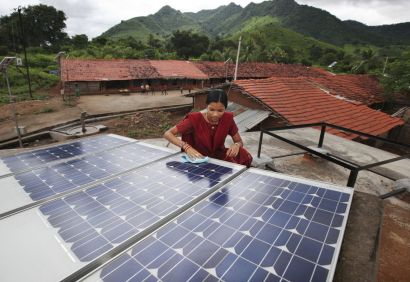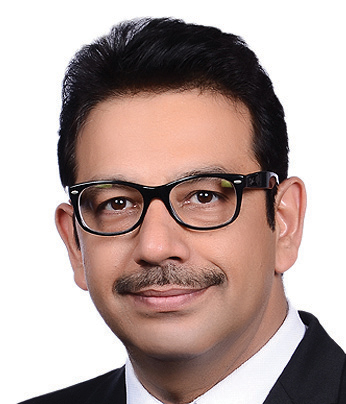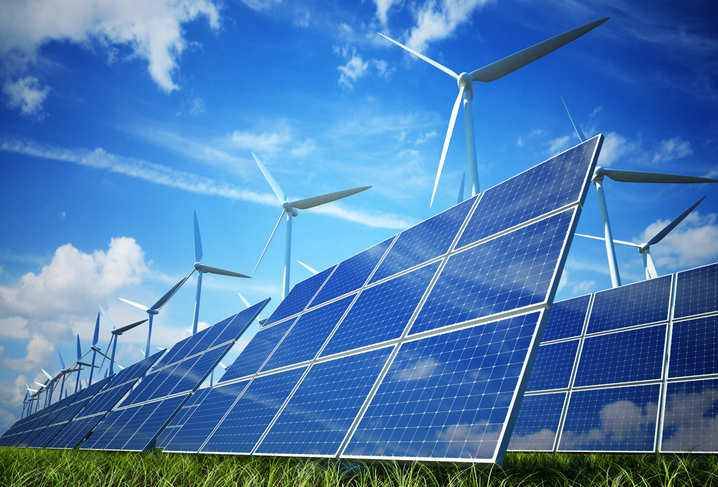
November 10
Can India Lead the Global Minigrid Market Like China Did With Solar PV
Between 2006 and 2016, China evolved from a bit player in solar panel manufacturing to a behemoth. In the process, it sparked a global boom in renewable energy and created a huge domestic industry.
India now finds itself in a position to do something similar for renewable energy minigrids -- if the government seizes the opportunity.
The microgrid market has massive potential. According to various estimates, it is expected to double by 2022, reaching between $23 billion to $39 billion, depending on the source. Similarly, minigrids (basically smaller-capacity microgrids) are gaining traction in growth economies in Africa and Asia, and are expected to play a major role in bringing electricity to the 1 billion people around the globe who are living without access to any power.
According to recent IEA analysis, minigrids and off-grid installations are the lowest-cost option for providing over 70 percent of the new electricity connections needed to reach that billion. Investment capital in minigrids alone would be about $190 billion between now and 2030, it said. A new World Resources Institute report estimates Africa will require more than 100,000 minigrids by 2040 to serve 140 million rural Africans.
As the cost of renewable energy continues to fall, the issue of climate resilience increases in importance, and electricity systems become decentralized, digitized and democratized, minigrids offer a new opportunity to “productize” a new segment of the clean energy market, one that hasn’t already been cornered by the Chinese as solar PV manufacturing has.
India is working from a strong foundation to do so. The government has already announced steps to support 10,000 minigrids by 2021. The country is also quickly becoming the world leader in solar irrigation (which, when paired with ancillary services, can be powered by minigrids that also serve local communities and businesses). Efforts are already underway within India to drive down the both the capital and operational costs of minigrids and create a “utility in a box."
In 2015, India pledged a concessional credit line of $10 billion to Africa over five years, earmarking at least 15 to 20 percent (or up to $2 billion) for solar energy projects, largely decentralized, to be implemented through the India-hosted International Solar Alliance (ISA).
During the African Development Bank’s annual meeting earlier this year, India’s government said it had already received interest from Indian companies to install 664,000 solar pumps, install 56 megawatts of minigrids and train 5,400 solar mechanics in Africa.
It also said that ISA would launch a new program to scale up deployment of minigrids in Africa to focus on design, adoption of common standards, aggregating demand, establishing global credit enhancement and de-risking mechanisms, assessing demand and costs requirements, identifying and developing attractive payment models for consumers, and persuading member ISA countries with overseas assistance budgets to earmark a portion of their soft loan money.
But reaching global scale starts with scaling minigrids in India.
Although the government is expected to release a final minigrid policy later this year, it has taken over two years to approve. Some states like Bihar and Uttar Pradesh have shown leadership in embracing minigrids. Uttar Pradesh's principal secretary for energy, Alok Kumar, said recently that “minigrids are elemental to the success of rural and household electrification.”
But much greater recognition of the value of decentralized solutions is needed if India hopes to be a domestic and global market leader. The government should level the playing field through increased financial and regulatory support of minigrids relative to the centralized grid. This must include subsidy parity.
India’s government, through campaigns like Make in India and Startup India, has already signaled its desire to mimic China’s approach to building a domestic industry. Minigrids tap into homegrown innovative energy startups pushing the sector forward.
Two of those companies, OMC Power and Husk Power, are already entering the Africa market. OMC Power recently announced funding from Japanese industrial giant Mitsui & Co. to form a joint venture in order to enter a handful of markets in Africa. Husk Power already has several minigrids in Tanzania and plans to have about 200 minigrids in east Africa within five years. It employs 15 full-time staff in Tanzania.






